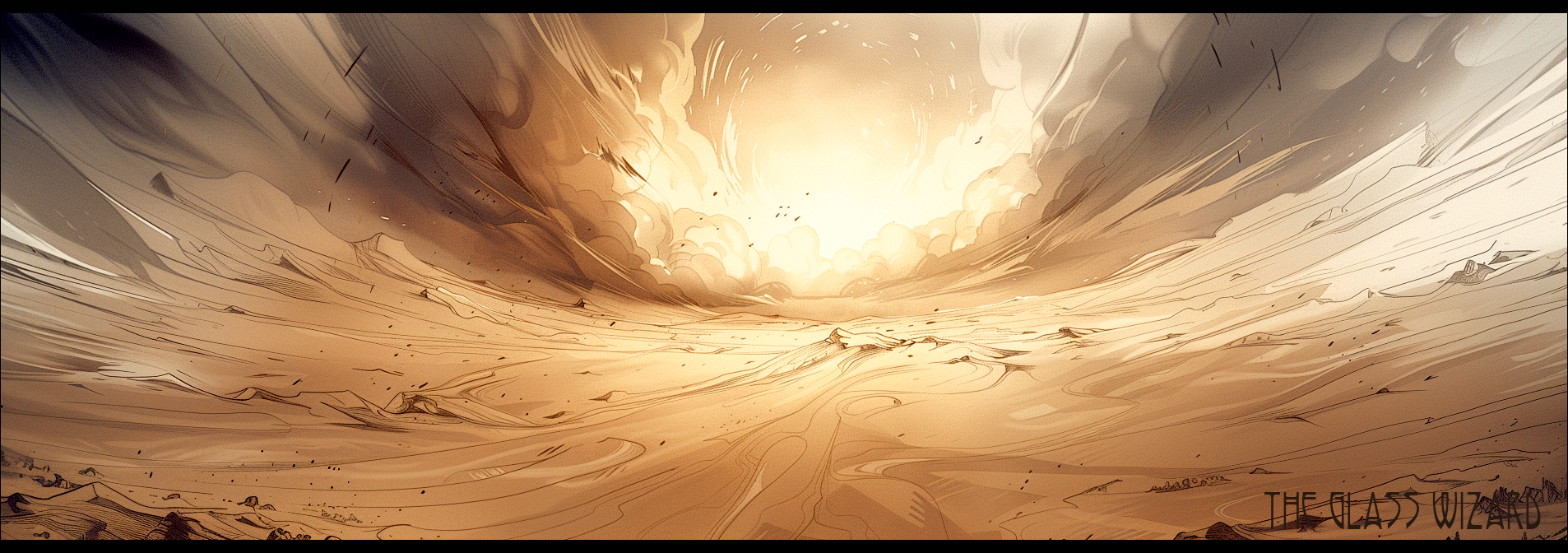What can you do about it?
Nothing.
What can you do about it?
Nothing.
What can you do about it?
Nothing.
What can you do about it?
Nothing right now.
What can you do about it?
The feathers.
“No way,” said Twig.
Yes.
“No,” said Mushroombird.
I could.
“But you should not. Because they take your energy,” said Twig.
I can spare some.
“Because they take essence,” added Twig.
I can spare some. I will be better afterwards.
“You might never wake up,” said Mushroombird.
Maybe.
“Midnight is waiting,” said Twig.
There was a long pause.
“Yes,” said Yves.
There was another pause.
“So what are you going to do about this,” Mushroombird gestured at him, as a whole.
She sat behind him on the Chest of Useless Artefacts, which was set from front to back on the sled. Twig occupied the space to his left, having squeezed in at the front between the chest and the railing of the sled, from where she let her legs dangle.
Yves turned away from both of them and faced forward. He looked at the sun-stricken desert, which gave him absolutely nothing to look at. He had left the Zwischenland for the desert five days ago. It was midday. The sun stood high overhead, casting the desolate hills of sand in hues of gleaming white and burning yellow. The sun burned his face.

Part of the Lightshifter illusionist curriculum involved creating humanoid and beast characters. Regardless of how a wizard planned to integrate his craft into his past-academy life, it became standard practice to invent a pair of characters of each major race. Students began by sketching these characters as soon as they were capable of creating grand visuals, to then continue refining and perfecting them over the years. By the time of their final examinations, these characters were expected to be fully-fledged and lifelike illusions, either visual or physical, depending on the student’s spectral disposition.
Pages:
